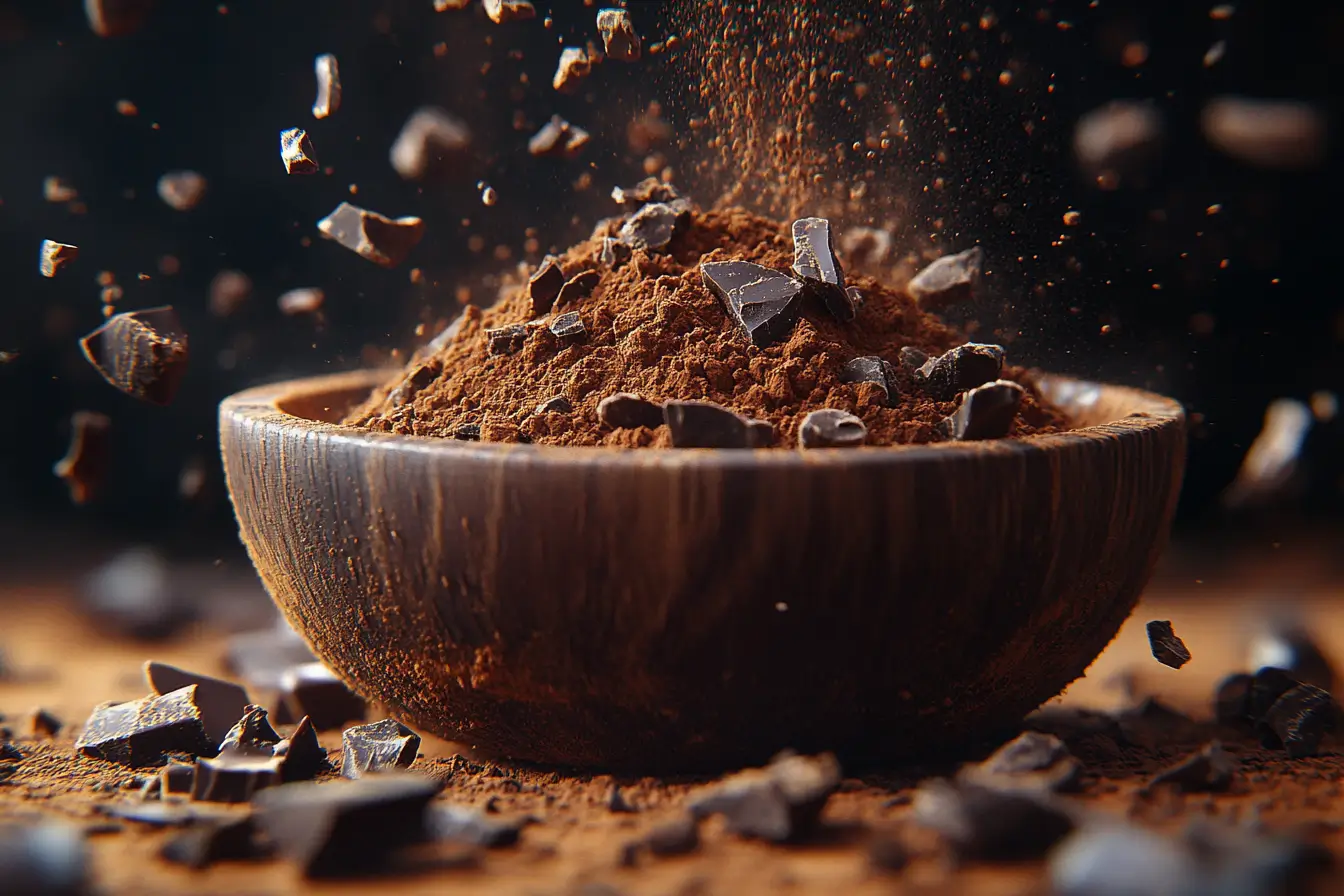Introduction
If you’re a chocolate lover, you’ve probably encountered cocoa powder in countless recipes. But have you ever tried black cocoa powder? This ultra-dark, rich ingredient isn’t just about color—it brings a bold yet smooth chocolate flavor to baked goods, making it a favorite among pastry chefs and home bakers alike.
In this guide, we’ll explore everything you need to know about black cocoa powder—how it’s made, its health benefits, and how to use it in baking. We’ll also share some mouthwatering recipes and answer frequently asked questions to ensure you get the most out of this unique ingredient.
Whether you’re looking to make the darkest chocolate cake, recreate Oreo-style cookies, or simply learn more about alkalized cocoa, you’re in the right place. Let’s dive into the world of black cocoa powder!
Table of Contents
1: What is Black Cocoa Powder?
Understanding Cocoa Powder Varieties
Not all cocoa powders are created equal. The main types include:
- Natural Cocoa Powder – This is the most common type, made by grinding roasted cocoa beans. It has a lighter brown color and a slightly acidic, bitter taste.
- Dutch-Processed Cocoa Powder – This variety is treated with an alkalizing agent, reducing its acidity and giving it a milder, smoother flavor.
- Black Cocoa Powder – A heavily alkalized cocoa powder that is even darker and smoother than Dutch-process. It has a deep black hue and is often used to achieve a dramatic color in baked goods.
How Black Cocoa Powder is Made
Black cocoa powder undergoes an intense Dutch-processing method, which neutralizes acidity and enhances its deep, dark color. This process involves:
- Harvesting – Cocoa beans are collected and fermented.
- Roasting – The beans are roasted to develop their signature chocolate flavor.
- Alkalization – The cocoa is treated with potassium carbonate, further darkening its color and reducing bitterness.
- Grinding – The processed beans are ground into a fine powder, ready for baking or cooking.
Because of its heavy alkalization, black cocoa powder is less bitter than natural cocoa and lacks the sharp, acidic taste of traditional cocoa powders.
Differences Between Black, Dutch-Processed, and Natural Cocoa Powder
Wondering how black cocoa powder stacks up against other types? Here’s a quick comparison:
| Feature | Natural Cocoa Powder | Dutch-Processed Cocoa Powder | Black Cocoa Powder |
|---|---|---|---|
| Color | Light brown | Dark brown | Almost black |
| Acidity | High (acidic) | Neutral | Very low (alkalized) |
| Flavor | Sharp, bitter | Smooth, mild | Deep, mellow |
| Best Used For | Cakes, brownies | Cookies, hot chocolate | Dark cakes, Oreos |
One of the best-known uses of black cocoa powder is in chocolate sandwich cookies—yes, just like Oreo cookies! Its ultra-dark color and smooth, slightly bitter flavor make it ideal for creating deeply chocolatey treats.
2: Benefits and Nutritional Value of Black Cocoa Powder
Is Black Cocoa Powder Healthy?
When you think of chocolate, you might assume it’s all about indulgence. But black cocoa powder offers more than just a deep, rich color—it also contains beneficial compounds that can support overall health.
Like other types of alkalized cocoa powder, black cocoa retains some of the antioxidants found in cocoa beans. These compounds help reduce inflammation and protect cells from oxidative stress. However, since it undergoes heavy Dutch processing, it has slightly fewer antioxidants than natural cocoa.
Another key factor? Black cocoa powder is unsweetened, meaning it doesn’t contain added sugars or fats. This makes it a guilt-free way to add deep chocolate flavor to your desserts without extra calories.
Nutritional Profile and Key Components
Let’s break down what you get in a typical one-tablespoon (5g) serving of black cocoa powder:
- Calories: 10-12 kcal
- Fat: 0.5g
- Carbohydrates: 3g
- Fiber: 1-2g
- Protein: 1g
- Iron: 2% of the Daily Value
- Magnesium: Small amounts
Since black cocoa powder is low in calories and sugar, it’s an excellent choice for those looking to cut down on sweeteners while still enjoying a rich chocolate taste. Plus, it contains a bit of iron and magnesium, both of which are important for energy production and muscle function.
Antioxidant and Mood-Boosting Properties
While black cocoa powder has a lower antioxidant content than natural cocoa, it still provides flavonoids—compounds known for supporting heart health and improving blood flow. Flavonoids have been linked to:
- Reduced inflammation – Helps fight oxidative stress in the body.
- Heart health support – May contribute to improved circulation and lower blood pressure.
- Cognitive benefits – Some studies suggest cocoa can enhance brain function and memory.
And let’s not forget the mood-boosting benefits! Like other forms of cocoa, black cocoa powder contains theobromine, a natural stimulant that provides a gentle energy lift without the jitters of caffeine.
Now that we’ve covered its nutritional perks, let’s move on to how you can use black cocoa powder in baking!
3: How to Use Black Cocoa Powder in Baking and Cooking
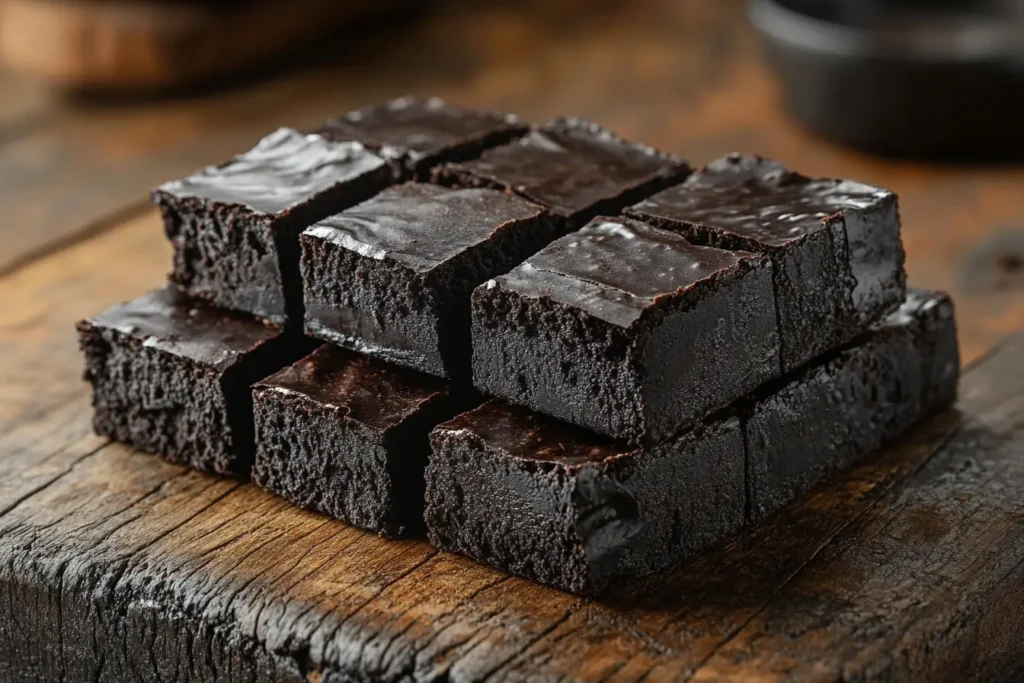
Best Ways to Incorporate Black Cocoa in Recipes
Using black cocoa powder in baking is all about balance. Due to its strong alkalization, it has a mild yet deep chocolate flavor and an almost charcoal-like color. That makes it ideal for recipes that require an intense chocolate appearance, such as:
- Oreo-style cookies – The secret to their signature black color!
- Dark chocolate cakes and brownies – Perfect for achieving an ultra-rich look.
- Black buttercream frosting – No food coloring needed!
- Savory dishes – Adds a deep, smoky flavor to certain sauces and rubs.
However, because black cocoa powder has a lower fat content and less acidity than natural cocoa, it’s best used in combination with Dutch-processed cocoa powder. This blend ensures you get both a deep chocolate color and a balanced flavor.
Adjusting Recipes for Black Cocoa Powder
If you’re substituting black cocoa powder in a recipe, keep these tips in mind:
- Use in Combination – Blend black cocoa powder with regular Dutch-process cocoa to maintain structure and flavor. A 50/50 ratio is a great starting point.
- Check the Leavening Agent – Since black cocoa powder is neutral (not acidic), it won’t react with baking soda. Instead, use baking powder to ensure proper rising.
- Increase Moisture – Because it’s heavily processed, black cocoa powder is drier than regular cocoa. Consider adding an extra tablespoon of oil, butter, or liquid in recipes to maintain texture.
Pairing Black Cocoa with Other Ingredients
To get the best flavor, pair black cocoa powder with ingredients that enhance its smooth, mild taste:
- Espresso powder – Boosts chocolate intensity.
- Brown sugar – Adds a bit of moisture and complements the cocoa’s richness.
- Vanilla extract – Balances out any bitterness.
- Buttermilk or sour cream – Provides moisture and a slight tang that enhances chocolate flavors.
By mastering these techniques, you can create deliciously dark and flavorful treats that stand out in both appearance and taste.
Up next, we’ll explore the best brands of black cocoa powder and where to buy them! Stay tuned. 🚀
4: Best Black Cocoa Powder Brands and Where to Buy
Top-Rated Black Cocoa Powder Brands
When shopping for black cocoa powder, quality matters. Since it’s heavily alkalized, different brands may offer slight variations in color, texture, and flavor. Here are some of the most highly rated options:
- King Arthur Black Cocoa Powder – Known for its rich, deep color and smooth taste, this brand is a favorite among bakers.
- Modern Mountain Black Cocoa Powder – A premium choice that delivers intense dark hues, perfect for Oreo-style cookies and cakes.
- The Cocoa Trader Black Cocoa Powder – A great budget-friendly option with a fine texture and subtle chocolate flavor.
- Guittard Black Cocoa Powder – High-quality and ideal for professional bakers looking for consistency.
Each of these brands is unsweetened and works well in baking, giving desserts that striking dark color without the need for artificial food dyes.
Where to Buy Black Cocoa Powder Online and Locally
Finding black cocoa powder in stores can be tricky since it’s less common than natural or Dutch-processed cocoa. However, you can easily purchase it online. Here are some of the best places to buy it:
- Amazon – A wide selection of brands, often available in bulk.
- King Arthur Baking – Directly from the manufacturer for guaranteed freshness.
- Specialty Baking Stores – Many online retailers like Baking Supply Co. carry black cocoa powder.
- Gourmet Grocery Stores – Some high-end grocery stores or health food stores stock it in the baking aisle.
If you’re unsure which brand to choose, start with a small package and test it in your favorite chocolate recipes before committing to a larger purchase.
5: Delicious Black Cocoa Powder Recipes
Black Cocoa Brownies Recipe
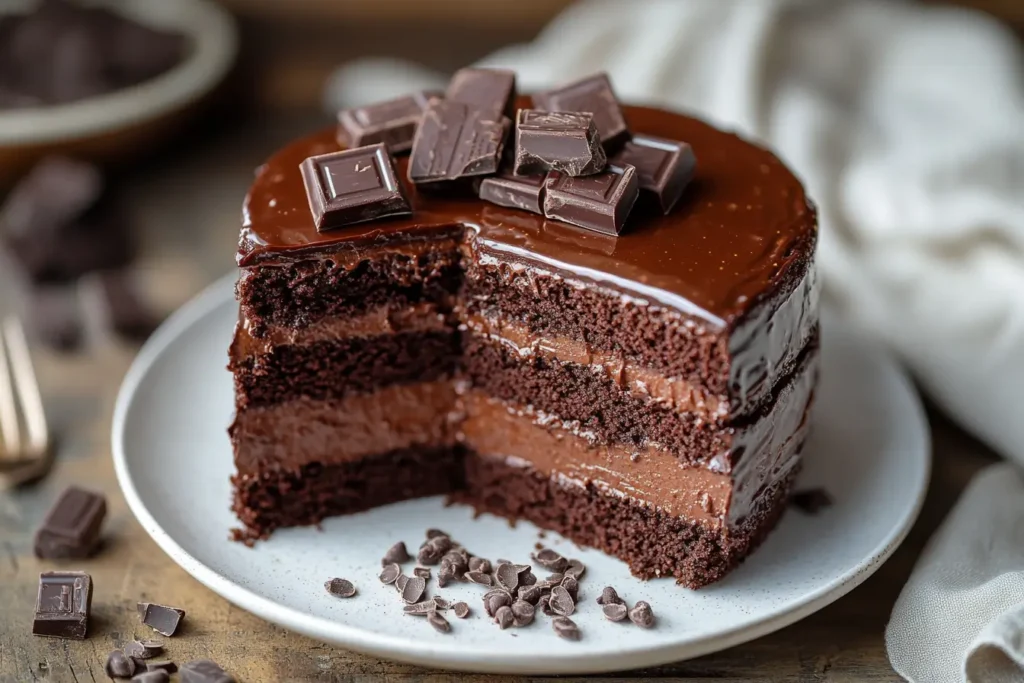
If you love rich, fudgy brownies, adding black cocoa powder takes them to the next level. These brownies have an ultra-dark color and a smooth chocolate flavor that’s hard to resist.
Ingredients:
- 1/2 cup unsalted butter, melted
- 1 cup granulated sugar
- 2 eggs
- 1 teaspoon vanilla extract
- 1/3 cup black cocoa powder
- 1/3 cup Dutch-processed cocoa powder
- 1/2 cup all-purpose flour
- 1/4 teaspoon salt
- 1/4 teaspoon baking powder
Instructions:
- Preheat your oven to 350°F (175°C). Line an 8×8-inch baking pan with parchment paper.
- In a bowl, whisk together melted butter and sugar until smooth.
- Add eggs and vanilla, whisking until combined.
- Sift in black cocoa powder, Dutch-process cocoa, flour, salt, and baking powder. Stir just until combined.
- Pour the batter into the prepared pan and bake for 20-25 minutes or until a toothpick inserted in the center comes out with moist crumbs.
- Let cool before slicing into squares. Enjoy!
Homemade Oreo-Style Cookies
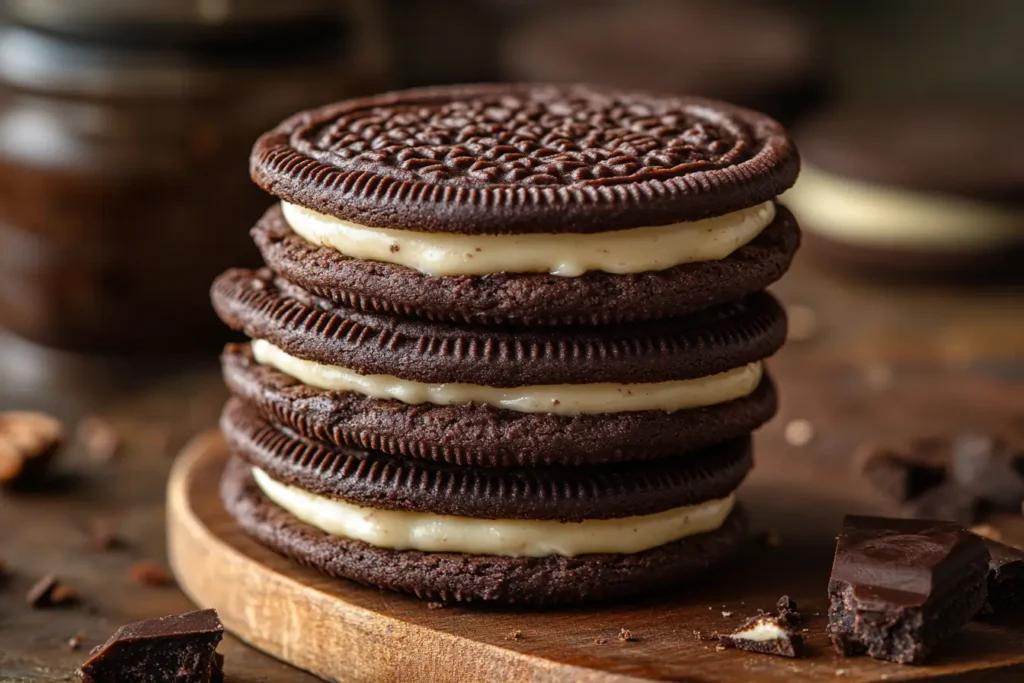
Ever wondered how to make your own Oreo-style cookies? The secret is black cocoa powder! This recipe gives you crispy, dark chocolate cookies with a creamy vanilla filling.
Ingredients for Cookies:
- 1 cup all-purpose flour
- 1/2 cup black cocoa powder
- 1/2 teaspoon baking soda
- 1/4 teaspoon salt
- 1/2 cup unsalted butter, softened
- 3/4 cup sugar
- 1 egg
- 1 teaspoon vanilla extract
Ingredients for Filling:
- 1/4 cup unsalted butter, softened
- 1 cup powdered sugar
- 1 teaspoon vanilla extract
- 1 tablespoon milk
Instructions:
- Preheat oven to 350°F (175°C). Line a baking sheet with parchment paper.
- In a bowl, whisk together flour, black cocoa powder, baking soda, and salt.
- In another bowl, cream together butter and sugar until fluffy. Add the egg and vanilla, mixing well.
- Gradually mix in the dry ingredients until a dough forms.
- Roll dough into small balls, flatten slightly, and place on the baking sheet.
- Bake for 10-12 minutes, then let cool completely.
- For the filling, beat butter, powdered sugar, vanilla, and milk until smooth.
- Spread filling between two cookies to create sandwich cookies.
Black Cocoa Cake for Extra-Rich Flavor
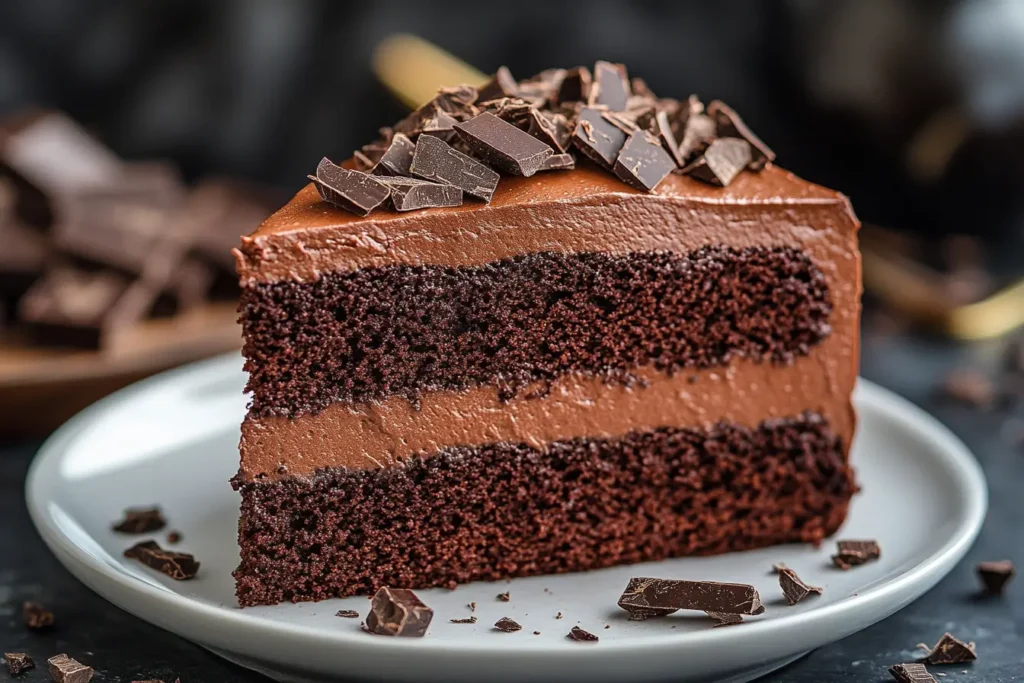
If you want a stunning dark chocolate cake that’s moist and flavorful, black cocoa powder is the perfect addition. This recipe is great for birthdays or any special occasion!
Ingredients:
- 1 3/4 cups all-purpose flour
- 1 cup sugar
- 3/4 cup black cocoa powder
- 2 teaspoons baking powder
- 1/2 teaspoon salt
- 1/2 cup vegetable oil
- 2 eggs
- 1 teaspoon vanilla extract
- 1 cup milk
- 1/2 cup hot water
Instructions:
- Preheat oven to 350°F (175°C). Grease and flour a 9-inch cake pan.
- In a large bowl, whisk together flour, sugar, black cocoa powder, baking powder, and salt.
- Add oil, eggs, vanilla, and milk. Mix until well combined.
- Stir in hot water, mixing until smooth.
- Pour batter into the prepared cake pan and bake for 30-35 minutes.
- Let cool before frosting with chocolate buttercream or whipped cream.
More Delicious Chocolate Desserts
For more chocolate dessert inspiration, check out this Chocolate Cherry Dump Cake from Fannie Recipes! It’s a quick and easy way to enjoy a rich, chocolatey treat.
Next, we’ll dive into the most frequently asked questions about black cocoa powder in Part 6. Stay tuned! 🚀
6: FAQs About Black Cocoa Powder
Is Black Cocoa Powder the Same as Dutch-Processed Cocoa?
No, but they are similar! Black cocoa powder is a type of Dutch-processed cocoa powder, but it undergoes extra alkalization to create its signature deep black color and smooth, mild chocolate taste. Regular Dutch-processed cocoa has a dark brown color and a richer flavor, while black cocoa powder is darker and less bitter.
If a recipe calls for Dutch-processed cocoa powder, you can often replace half with black cocoa powder for a richer color without losing too much chocolate intensity. However, using only black cocoa powder may result in a more subtle chocolate flavor.
Can You Substitute Black Cocoa for Regular Cocoa?
Yes, but with some adjustments! Since black cocoa powder is neutral (not acidic), it does not react with baking soda, which requires acidity to work. If your recipe relies on natural cocoa powder and baking soda for leavening, you may need to:
Use baking powder instead – Baking powder already contains an acid, making it a better match for black cocoa powder.
Mix with Dutch-process cocoa – Combining black cocoa powder with Dutch-processed cocoa helps maintain structure and flavor balance.
For recipes like cakes, brownies, and cookies, you can substitute 25-50% of the total cocoa powder with black cocoa powder to get that deep color while keeping the best texture and taste.
Why is Black Cocoa Powder Less Bitter?
The Dutch-processing removes most of the natural acidity found in cocoa, which results in a smoother, less bitter taste. Because of this, black cocoa powder tastes more neutral compared to natural cocoa, which has a sharper, more acidic bite.
This is why black cocoa powder works so well in chocolate sandwich cookies (like Oreos)—it creates a bold, dark look without overpowering sweetness.
Does Black Cocoa Powder Contain Caffeine?
Yes, but only in small amounts. Like all cocoa powders, black cocoa powder naturally contains some caffeine, though the amount is much lower than coffee or tea. On average, one tablespoon of black cocoa powder has about 12 mg of caffeine, compared to 95 mg in a cup of coffee.
If you’re sensitive to caffeine, you may want to limit how much black cocoa powder you consume in the evening. However, for most people, the caffeine content is low enough that it won’t cause jitters.
7: Final Thoughts and Expert Baking Tips
How to Store Black Cocoa Powder for Freshness
To keep black cocoa powder fresh and flavorful, follow these storage tips:
- Keep it in an airtight container – Exposure to air can cause cocoa powder to lose its potency over time.
- Store in a cool, dry place – Avoid direct sunlight, humidity, or high temperatures, as these can cause clumping.
- Do not refrigerate or freeze – Moisture can lead to spoilage, so it’s best to store black cocoa powder at room temperature.
When stored properly, black cocoa powder can last up to two years without losing quality. Just check for any signs of clumping, odor changes, or discoloration before using.
Common Mistakes to Avoid When Using Black Cocoa
Using black cocoa powder can elevate your baking, but a few mistakes can lead to disappointing results. Here are some common pitfalls and how to fix them:
❌ Using only black cocoa powder – Since it has a milder chocolate taste, it’s best to combine it with Dutch-processed cocoa for a balanced flavor.
❌ Not adjusting the leavening agent – Remember that black cocoa powder is neutral, so always use baking powder instead of baking soda unless your recipe includes another acid (like buttermilk or vinegar).
❌ Skipping the extra moisture – Because black cocoa powder is drier than other cocoa powders, adding an extra tablespoon of liquid or fat can prevent baked goods from becoming too dry.
By keeping these tips in mind, you can bake with confidence and create stunning dark chocolate desserts that taste just as good as they look!
Final Words
Black cocoa powder is a fantastic ingredient for bakers looking to add deep, dark color and smooth chocolate flavor to their treats. Whether you’re making brownies, cakes, or homemade Oreo-style cookies, this unique cocoa powder can take your recipes to the next level.
Now that you’ve learned how to use, store, and bake with black cocoa powder, it’s time to experiment in the kitchen! Try swapping a portion of your regular cocoa with black cocoa powder and see the difference for yourself.
Happy baking! 🍫🎂

